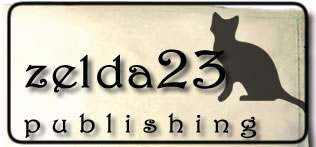Headers and Footers
- Navigate to:
- Word Basics
- Fonts and Styles
- Basic Text Formatting
- Clipart
- Tables
- Columns
- Headers and Footers
- Using Mail/Data Merge
- Video: Mail Merge on the Macintosh
- Video: Mail Merge in Windows
- Reviewing and Editing Documents
Text or graphics, such as the page number or a logo, can be automatically inserted into the top or bottom margin of each page in your document very simply in Microsoft Word.
To work with the Header and Footer of your document, follow these steps:
1. Click the View menu, then click Header and Footer.

2. You will be transported to the upper margin of the current page (the Header), and a new toolbar should appear on your screen. This is the Header and Footer toolbar, which contains tools for automatic page numbering and dating, as well as formatting for each section in your document.

Note: To switch to the bottom margin (Footer) of your document, simply click the Switch tool in your Header and Footer toolbar. Alternately, you may scroll down and click into the Footer area.
![]()
3. What you enter into the Header or Footer will appear on every page of the document or section. Therefore, Word gives you many tools for automatically inserting vital data, such as the page number, author, or title. Click the Autotext menu in the Header and Footer toolbar to use any of the various automated options Word gives you.

4. You can customize your Header or Footer, of course. The second section of the toolbar contains tools for automatic page numbering. You may simply add the page number by clicking the first tool, add the number of total pages in the document with the second tool, or format how the page numbers will look (Roman numerals, where numbering begins, and so forth) with the third tool.
![]()
5. The third section of the toolbar allows the user to insert and format the current date or time to the document.
![]()
6. The fourth section of the toolbar contains tools for Header and Footer formatting. When clicked, the first tool removes the Header and Footer from the first page only, which is convenient if you have a title or cover page at the beginning of your document. The second tool, when selected, allows the user to have a different Header or Footer on odd and even pages. The third tool brings you to the Format Document window. The final tool will show or hide the rest of the document from view while you work in the Header or Footer.
![]()
7. The fifth section of the toolbar contains tools for switching to other places in the document. You may jump to the Footer or Header, the next or previous page, or to any page in the document that you specify. These things may also be accomplished by scrolling through the document as you would normally.
![]()
8. To leave the Header or Footer and return to the body of your document, simply click Close in the toolbar. Alternately, you may double-click on the document anywhere outside of the Header or Footer areas.
